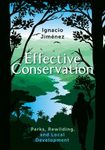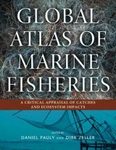About this book
Trophic cascades – the top-down regulation of ecosystems by predators – are an essential aspect of ecosystem function and well-being. Trophic cascades are often drastically disrupted by human interventions – for example, when wolves and cougars are removed, allowing deer and beaver to become destructive – yet have only recently begun to be considered in the development of conservation and management strategies.
Trophic Cascades is the first comprehensive presentation of the science on this subject. It brings together some of the world's leading scientists and researchers to explain the importance of large animals in regulating ecosystems, and to relate that scientific knowledge to practical conservation.
Chapters examine trophic cascades across the world's major biomes, including intertidal habitats, coastal oceans, lakes, nearshore ecosystems, open oceans, tropical forests, boreal and temperate ecosystems, low arctic scrubland, savannas, and islands. Additional chapters consider aboveground/belowground linkages, predation and ecosystem processes, consumer control by megafauna and fire, and alternative states in ecosystems. An introductory chapter offers a concise overview of trophic cascades, while concluding chapters consider theoretical perspectives and comparative issues.
Trophic Cascades provides a scientific basis and justification for the idea that large predators and top-down forcing must be considered in conservation strategies, alongside factors such as habitat preservation and invasive species. It is a groundbreaking work for scientists and managers involved with biodiversity conservation and protection.
Contents
Foreword \ Ellen K. Pikitch
Preface
Chapter 1. Trophic Cascades: What They Are, How They Work, and Why They Matter \ John Terborgh, Robert D. Holt, and James A. Estes
PART I. Aquatic Ecosystems
Chapter 2. Food Chain Dynamics and Trophic Cascades in Intertidal Habitats \ Robert T. Paine
Chapter 3. Some Effects of Apex Predators in Higher-Latitude Coastal Oceans \ James A. Estes, Charles H. Peterson, and Robert S. Steneck
Chapter 4. Trophic Cascades in Lakes: Lessons and Prospects \ Stephen R. Carpenter, Jonathan J. Cole, James F. Kitchell, and Michael L. Pace
Chapter 5. Prey Release,Trophic Cascades, and Phase Shifts in Tropical Nearshore Ecosystems \ Stuart A. Sandin, Sheila M.Walsh, and Jeremy B. C. Jackson
Chapter 6. Trophic Cascades in Open Ocean Ecosystems \ Tim Essington
PART II. Terrestrial Ecosystems
Chapter 7. The Role of Herbivores in Terrestrial Trophic Cascades \ Robert J. Marquis
Chapter 8. Propagation of Trophic Cascades via Multiple Pathways in Tropical Forests \ John Terborgh and Kenneth Feeley
Chapter 9. Large Predators, Deer, and Trophic Cascades in Boreal and Temperate Ecosystems \ William J. Ripple,Thomas P. Rooney, and Robert L. Beschta
Chapter 10. Islands as Tests of the Green World Hypothesis \ Lauri Oksanen,Tarja Oksanen, Jonas Dahlgren, Peter Hambäck, Per Ekerholm, Åsa Lindgren, and Johan Olofsson
Chapter 11. Trophic Cascades on Islands \ Thomas W. Schoener and David A. Spiller
Chapter 12. Trophic Cascades,Aboveground?Belowground Linkages, and Ecosystem Functioning \ David A.Wardle
PART III. Predation and Ecosystem Processes
Chapter 13. Ecological and Conservation Implications of Mesopredator Release \ Justin S. Brashares, Laura R. Prugh, Chantal J. Stoner, and Clinton W. Epps
Chapter 14. Fear-Mediated Food Webs \ Joel Berger
Chapter 15. Trophic Cascades in African Savanna: Serengeti as a Case Study \ A. R. E. Sinclair, Kristine Metzger, Justin S. Brashares,Ally Nkwabi, Gregor Sharam, and John M. Fryxell
Chapter 16. Consumer Control by Megafauna and Fire \ William Bond
Chapter 17. Alternative States in Ecosystems \ Marten Scheffer
PART IV. Synthesis
Chapter 18. Theoretical Perspectives on Trophic Cascades: Current Trends and Future Directions \ Robert D. Holt, Ricardo M. Holdo, and F. J. Frank van Veen
Chapter 19. Comparing Trophic Cascades across Ecosystems \ Jonathan B. Shurin, Russell W. Markel, and Blake Matthews
Chapter 20. Conservation Relevance of Ecological Cascades \ Michael E. Soulé
Chapter 21. Conclusion: Our Trophically Degraded Planet \ John Terborgh and James A. Estes
References
Contributors
Index
Customer Reviews
Biography
John Terborgh is James B. Duke Professor of Environmental Sciences and codirector of the Center for Tropical Conservation at Duke University. He has devoted much of the past 35 years to issues concerning the ecology and conservation of neotropical systems.
After spending most of his career as a research scientist with the US Geological Survey, James A. Estes is currently a faculty member at the University of California at Santa Cruz where he holds a position of professor of ecology and evolutionary biology.













![Biomas Brasileiros [Brazil's Biomes]](http://mediacdn.nhbs.com/jackets/jackets_resizer_medium/23/234100.jpg?height=150&width=104)





















